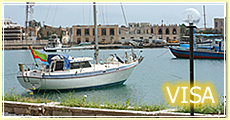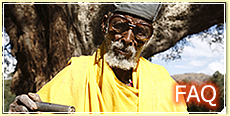お知らせ
鉱業会社vs国連安保理武器禁輸決議 [UNSC resolution 1907]
2010年5月14日、鉱業情報サイトminesite.comにて、鉱業会社と国連安保理のエリトリアへの武器禁輸決議1907号に関する以下の記事が掲載されました。
駐日エリトリア国大使館![]()
2010年5月14日
国連制裁にも関わらずエリトリアは鉱業会社にとって新しいフロンティアである
By Charles Wyatt
鉱業論文を歴史地理のレッスンからはじめるのは珍しいことだが、しかし、このケースにおいては、最近の多くの鉱業会社のエリトリア参入の動きを理解する唯一の方法は、この国の位置と、この国を取り巻く情勢、この国で何が起きてきたのかを正確に理解することである。この地域は、おおまかにアフリカの角と呼ばれているが、地図をよく見てみると、物理的な“角”は、ジブチ南部からアデン湾へ広がり、エチオピアを西部と北部にもち※、ほとんどがソマリアで構成されている。ジブチは紅海に沿った海岸線を持ち、ソマリアはインド洋と同じくアデン湾にも長大な海岸線を有している。ここが、海賊たちが獲物を待ちながら存在している場所だと思い出しただろうか。しかし、エチオピアは全く海岸線をもたず、そのためにエチオピアは、何世代にも渡って、ジブチからスーダンにいたる紅海(エジプトはさらにその北方にある)からエチオピアを隔てているエリトリアにちょっかいを出し続けてきたわけである。
エリトリアは、第二次世界大戦以前は、イタリアの植民地であったが、1941年にイギリスに引き継がれた。大戦が終わると、1952年に、国際連合はエチオピアが主張する主権と、エリトリアの独立への強い願望との間の妥協策として、エリトリアをエチオピアと連邦を組む自治組織とした。この10年後に、エチオピア人はエリトリアを併合しようとし、30年以上にわたる独立戦争の引き金を引いてしまった。結果は、1993年に独立を宣言したエリトリアの勝利であり、エチオピアは陸封国となった。両国は、エチオピアの、エリトリア領内のマッサワ港やアッサブ港へのアクセスという問題や、不平等な貿易条件のために、良い隣人となることはほとんどなく、関係を悪化させた。1998年には、数年続くことになった対立の再燃があり、またしてもエチオピアは紅海へのアクセスを獲得しようとした。
2000年以来、エリトリアは戦争の荒廃から経済を立て直そうとしており、不安定な平和が続いている。しかし、難しい地域に立地しており、スーダンやジブチ、ソマリア付近国境で問題が起こるたびに、エリトリアは国連によって責任を負わされてきた。これは昨年12月の一連のエリトリアに対する制裁決議の可決において最高潮に達した。これら全ての出来事の背後にあるものは、アメリカ外交の卑劣な策謀である。アメリカは、アメリカの”推薦候補”であるエチオピアが紅海にアクセスを持つことを求めており、エリトリアについては、アメリカの好みから見ると“独立しすぎている”と考えている。エリトリアは制裁を解除するために闘ってきた。その間にも、Tesfamicael Gerahtu駐英大使は、昨日ロンドンで、エリトリアは食料生産および教育・医療サービスの改善において自力本願になるように全力を尽くしていると述べている。
金探索者であるLondon AfricaのRupert Baring氏によれば、今日アスマラに着いた人々は誰でも、飛行機はイタリアに向けて再び進路を取ったのだと容易に考え得るだろう。広い街路、イタリア建築、コーヒー文化、数多くのカフェがそこにはある。彼が描く人々は、誇り高く、独立心が強く誠実であり、汚職というアフリカの多くの地域での風土病のいかなる兆しも見つけられない。鉱業会社が、その大小に関わらず、エリトリアを真剣なまなざしで見ている理由のいくつかは、こういったことである。しかし、鉱業会社のエリトリアへの注目の最大の理由は、この国が現代における未開拓の地であり、エリトリアの地下には、他のアフリカの角諸国と同様に、紅海側面上に先カンブリア代の岩盤が露出したものであるアラビア・ヌビア楯状地が存在しているからである。この楯状地は、ヨルダン、サウジアラビア、イエメンまで続いており、北部では、サハラ砂漠、アラビア砂漠として露出しており、南部ではエチオピア高原となっている。
アラビア・ヌビア楯状地は、人類の最も古い地質学上の試み(主にエジプトと北東スーダンの岩盤から金を抽出したエジプト人のこと)が行われた場所であった。新しい時代の金の発見は、スーダン、エリトリア、サウジアラビアでなされた。先週、ロンドンを通りがかったオーストラリアの金探索者であるChalice Gold Mines社の会長であるTim Goyderは、彼の会社のZaraとKokaプロジェクトが、Centamin社のエジプト西部砂漠にある金鉱と同じ先カンブリア代の楯状地の上にあることを示す地図を広げた。歴史と政治が原因で、エジプトで行われてきた現代の金探索(Centaminは別として)の総量はささやかなものである、しかし、エリトリアにおいては最近まで全く何もなされてこなかった。誰かが最初の開拓者になるべきだが、それはこのケースにおいては、カナダの企業であるNevsun社であるようだ。Nevsun Resources社は、同社の高品質な金、銅、亜鉛鉱床において、今年後半には生産を開始することになっている。
Nevsun社のTookie Angus会長は、Bishaプロジェクトは、エリトリア政府から継続的な支援を受け、2008年1月には鉱業ライセンスを得たと確認した。Bisha鉱山は、エリトリアにおいて最初の近代的な鉱山となり、100万オンスの金、940万オンスの銀、7.34億ポンドの銅、10億ポンド以上の亜鉛が鉱山寿命内にもたらされる。しかし、このプロジェクトについて本当に面白い側面というのは、Nevsun社とエリトリア政府の契約にある。現行のエリトリア鉱業法の下では、国は10%の利益を自動的に無料で得る権利を持つが、Nevsun社との協定の下では、国はさらに30%の利益について有料で参加することになる。この30%の貢献利益は、Nevsun社への暫定的な2500億ドルの支払いで、2007年10月に合意された。Nevsun社への支払いの残額は、独立した鑑定人により決定され、また鉱床からの最初の金の出荷により評価されるプロジェクトの30%の正味価格に基づくことになる。
鉱業会社での26%の出資金という結末にしかならない南アフリカのブラックエンパワーメントの要求は、対等なパートナーとして支払う意図の全くない事業体により効果的に盗まれている、しかしこれはエリトリアには適さない。エリトリア政府は満足なリターンを確約するプロジェクトで顕著な出資分を得ようとしており、Nevsun社との契約は正攻法なものである。さらにエリトリアは先へ進もうとしている。エネルギー・鉱山省は、9月にエリトリアで開かれる鉱業ポテンシャルを紹介する地域的なジオ・コンファレンスを組織するのを支援している。Centamin社がエジプトから招待され、Hassai VMS鉱床を持つLa Mancha社がスーダンから招待され、Jabel Sayedが銅・金鉱床をもつCitadel社がサウジアラビアから招待されていることは殊に興味深い。アラビア・ヌビア楯状地の上にある全ての地域が代表をだしており、小国であるエリトリアが主導権を握っている。国連がアメリカの命を受けてエリトリアに制裁を課した時には、国連はこんなことは予想だにしていなかっただろう。
いまや、エリトリアでは20の鉱業会社が操業している。中国企業、韓国企業、若い企業を追いかけて数社の大手企業も入ってきている。エリトリアは、オーストラリアをモデルにした非常に賢明な鉱業法をもっている。世界有数の銅生産者であるAntofagasta社は、アスマラプロジェクトのAdi Rassi銅・金プロジェクトにおいてカナダ企業のSunridge Gold社と合弁事業を組んでおり、Anglo American社は、Thani-Ashantiアライアンスに入っている。Newmont社も事情を注視していると言われており、これが国連が制裁という決定を見直すべきもう一つの理由である。アスマラ・パレス・ホテルのグリーン・バーでは、イギリス人や似たような趣味の地元民がイギリスのサッカーを観戦しているが、カタール首長国はいまや、このホテルを所有しているだけでなく、マッサワにおいて紅海を望む別荘を建設中である。現代においていかなる探査も不可能にしてきた歴史を持つエリトリアが、いまや新たなフロンティアであり誰もが注視している。鉱業会社とファンド・マネージャーたちからの反応は似ており、例外なくポジティブなものである、それゆえにこれは、アメリカの新聞の見出しを飾ることはないかもしれないが、大きな話に構築されていくであろう。
訳者注 原文ママ
国連制裁にも関わらずエリトリアは鉱業会社にとって新しいフロンティアである(pdf)
![]()
14th May, 2010, an article about about Mining industry versus UNSC arms embargo resolution 1907 on Eritrea is on the mining information site, “miniseite.com”.
Embassy of the State of Eritrea to Japan
14th May, 2010
Eritrea is the New Frontier for Mining Companies, Even in Spite Of UN Sanctions
By Charles Wyatt
Not very often we start a mining article with a combined geography/history lesson, but in this case the only way to make sense of the recent moves by a number of mining companies into Eritrea is to understand exactly where the country is, what surrounds it, and what has been going on there.
The region is described loosely as the Horn of Africa but a close look at a map shows that the real Horn juts out south of Djibouti into the Gulf of Aden and largely consists of Somalia, with Ethiopia to its west and north. Djibouti has coast along the Red Sea and Somalia has a massive coastline in the Gulf of Aden as well as the Indian Ocean. That is where the pirates lie in wait for their victims, remember?
Ethiopia, however, has no coastline at all and that is why it has for generations made a pest of itself to Eritrea which cuts it off from the Red Sea, running all the way up from Djibouti to Sudan, with Egypt a bit further to the north.
Before the Second World War Eritrea was an Italian colony, but was taken over by the British in 1941. Once the war was over, in 1952, the United Nations decided to establish it as an autonomous entity federated with Ethiopia as a compromise between Ethiopian claims for sovereignty and Eritrean aspirations for independence. Ten years later the Ethiopians tried to annex it, triggering a war which lasted for more than 30 years. The result was victory for Eritrea which declared independence in 1993, leaving Ethiopia landlocked. The two countries hardly became good neighbours, with the issues of Ethiopian access to the Eritrean ports of Massawa and Assab, and unequal trade terms, souring relations. In 1998 there was another flare-up that lasted a couple of years and again it was Ethiopia trying to get access to the Red Sea.
Since 2000 there has been an uneasy peace, with Eritrea trying to rebuild its economy after a devastating period of war. It sits, however, in a difficult area and every time there were problems in Sudan, Djibouti or Somalia near its border, Eritrea was held responsible by the UN. This culminated in the adoption of a package of sanctions against Eritrea last December.
What has to be seen in the background of all this is the dark art of US diplomacy. The US wanted its favoured candidate Ethiopia to have access to the Red Sea and found Eritrea much too independent for its liking. Eritrea is fighting its corner to get the sanctions lifted.
In the meantime, as Ambassador Tesfamicael Gerahtu pointed out in London yesterday, the country is straining every muscle to become self-dependent in food production and improve education and health services.
Anyone arriving in the capital of Asmara today could easily think the plane had been re-routed to Italy, according to Rupert Baring of gold explorer London Africa. There are wide streets, Italianate architecture and a coffee culture, with plentiful cafes.
The people he describes as proud, independent and honest and he has never seen any sign of the corruption endemic in so many parts of Africa. These are just some of the reasons why mining companies, big and small, are taking a serious look at Eritrea. The biggest reason of all, however, is the fact that the country is unexplored in modern times and underneath Eritrea, as well as under the other countries in the Horn of Africa, lies the Arabian-Nubian Shield which is an exposure of pre-Cambrian rocks on the flanks of the Red Sea. The Shield also crosses over into Jordan, Saudi Arabia, and Yemen. In the north it’s exposed as part of the Sahara Desert and Arabian Desert, and in the south in the Ethiopian Highlands.
The Arabian-Nubian Sheld was the site of some of man’s earliest geologic efforts, principally the Egyptians who extracted gold from the rocks of Egypt and north east Sudan. New gold discoveries have been made in Sudan, Eritrea, and Saudi Arabia. Last week Tim Goyder, executive chairman of the Australian gold explorer Chalice Gold Mines, was passing through London and he laid out a map which showed that his company’s Zara and Koka projects lie on the same pre-Cambrian shield as Centamin’s Sukari gold mine in the Western Desert of Egypt. For reasons of history and politics, the amount of modern gold exploration that has taken place in Egypt – Centamin apart – is modest, but none at all has taken place in Eritrea until recently. Someone has to be the original pioneer, and it appears to be the Canadian company Nevsun in this particular case. Nevsun is bringing its high grade gold, copper and zinc Bisha deposit into production later this year.
Tookie Angus, chairman of Nevsun, confirms that the Bisha project has received continuous support from the Eritrean government, which granted the mining licence in January 2008. Bisha will be the first modern-day mine in the country, with production slated to return over a million ounces of gold, 9.4 million ounces of silver, 734 million pounds of copper and more than one billion pounds of zinc during its life. The really interesting aspect, however, is the deal between Nevsun and the government of Eritrea. Under existing Eritrean mining legislation, the State of Eritrea has an automatic right to a free carried 10 per cent interest, but under an agreement with Nevsun it also has an additional 30 per cent paid participating interest. This 30 per cent contributing interest was agreed upon in October 2007, with a provisional US$25million payment made to Nevsun. The remaining balance to be paid to Nevsun will be determined by an independent valuator, and will be based on the net present value of 30 per cent of the project, as evaluated upon the first shipment of gold from the mine.
Not for Eritrea the black empowerment requirements of South Africa which so often end up with a 26 per cent stake in mining companies being effectively stolen by entities which have no intention of paying their way as partners. The Nevsun deal is straightforward stuff, with the Eritrean government setting out to get a significant stake in a project which should ensure it a satisfactory return. And it goes further than this. The Ministry of Energy and Mines is helping to organise a regional Geo-Conference in Eritrea in September which will showcase the potential for mining. It is especially interesting that Centamin has been invited from Egypt, La Mancha with its Hassai VMS mine, from Sudan, and Citadel which has the Jabel Sayed copper gold deposit, from Saudi Arabia. The whole region underlain by the Arabian-Nubian Shield is being represented, and little Eritrea is taking the lead. And that’s hardly what the UN envisaged when it put in the sanctions at the behest of the US.
There are now getting on for 20 mining companies active in the country. The Chinese are there, the Koreans are there, and now some of the big boys are following the juniors in. The country has a very sensible mining code, modelled on the Australian one. Antofagasta, one of the world’s largest copper producers is in a joint venture with the Canadian company Sunridge Gold on the Adi Rassi copper gold project within its Asmara project, and Anglo American is involved in the Thani–Ashanti Alliance. Newmont is also said to be taking a close look, which is another reason for the UN to reconsider its decision on sanctions. The Amir of Qatar not only owns the Asmara Place Hotel, where Brits and locals alike watch English football in the Green Bar, but is also building a summer home at Massawa overlooking the Red Sea. Eritrea, with a history that has precluded any exploration in modern times, is the new frontier and everyone is taking a look. The reaction from mining companies and fund managers alike has been universally positive, so this is likely to build up into a big story even if it is one that will not hit the headlines in the States.
Eritrea is the New Frontier for Mining Companies, Even in Spite Of UN Sanctions(pdf)











